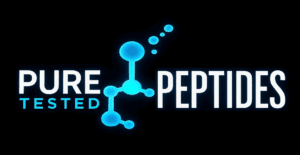Quality & Analytical Testing: HPLC/LC–MS Verification for Research Consistency
Research-Only: No therapeutic claims; analytical focus.
Analytical workflows for peptide materials typically combine reversed-phase HPLC for purity profiling with orthogonal mass spectrometry for molecular identity and sequence confirmation. Laboratories use gradient methods with UV detection (e.g., 214/220 nm) to quantify main peak area versus impurities, complemented by MS/MS fragmentation to confirm sequence tags. Replicate injections and system-suitability metrics ensure chromatographic stability.
In mechanism-driven studies, accurate identity/purity underpins signal interpretation—whether measuring GH/IGF-1 axis modulation (PMID: 17018654), FAK/paxillin activation during matrix remodeling (PMC: PMC8275860), or mitochondrial changes under cardiolipin-binding tetrapeptides (PMID: 32554501). For NAD+ biology and sirtuins, reproducible quantitation of redox cofactors and related metabolites (e.g., LC–MS for NAD+/NADH) is essential to interpret enzyme activity (PMC: PMC7963035).
Reporting conventions include batch COAs, solvent compatibility, storage guidance, and, where applicable, peptide content by anhydrous weight. Together these practices support inter-lab comparability and mechanistic clarity. Browse the full catalog.

Methodological Notes. To contextualize mechanistic observations, laboratories typically
report experimental temperature, buffer composition, biological replicates, and blinding/randomization
practices for image analysis and Western quantification. Where possible, orthogonal corroboration is
included: for example, receptor pharmacology by radioligand binding or BRET assays combined with
downstream second messengers; structural endpoints by both live-cell imaging and fixed immunostaining;
and bioenergetics readouts by oxygen consumption/ECAR coupled to targeted metabolomics. These practices
increase reproducibility and allow meaningful comparison across peptide classes and batches in research-only
settings (PMC: PMC7350483).
Statistics & Reporting. Typical analyses include power calculations, pre-registered endpoints,
and multiple-comparisons adjustments for families of tests. Effect-size reporting (Cohen’s d or Hedges’ g),
confidence intervals, and transparent outlier policies enable precise interpretation of receptor- or
mitochondria-targeted peptide experiments. Collectively, these design elements improve the signal-to-noise
ratio in bench studies and inform subsequent assay selection. Browse the full catalog.
